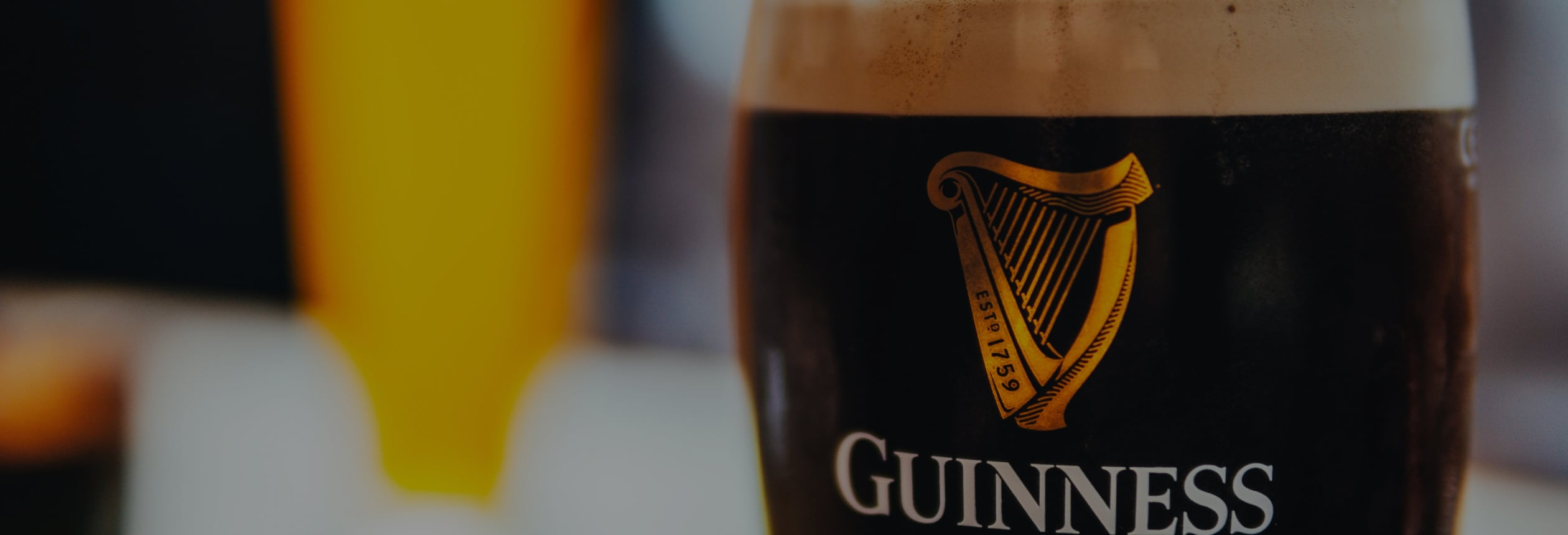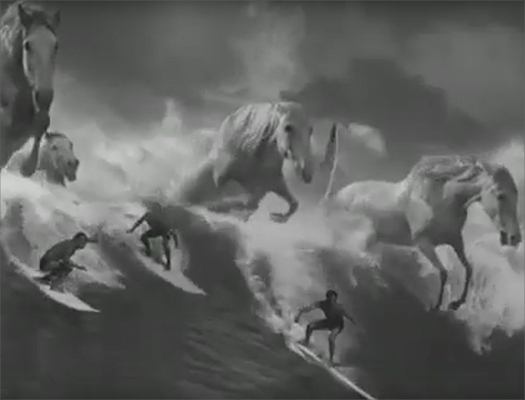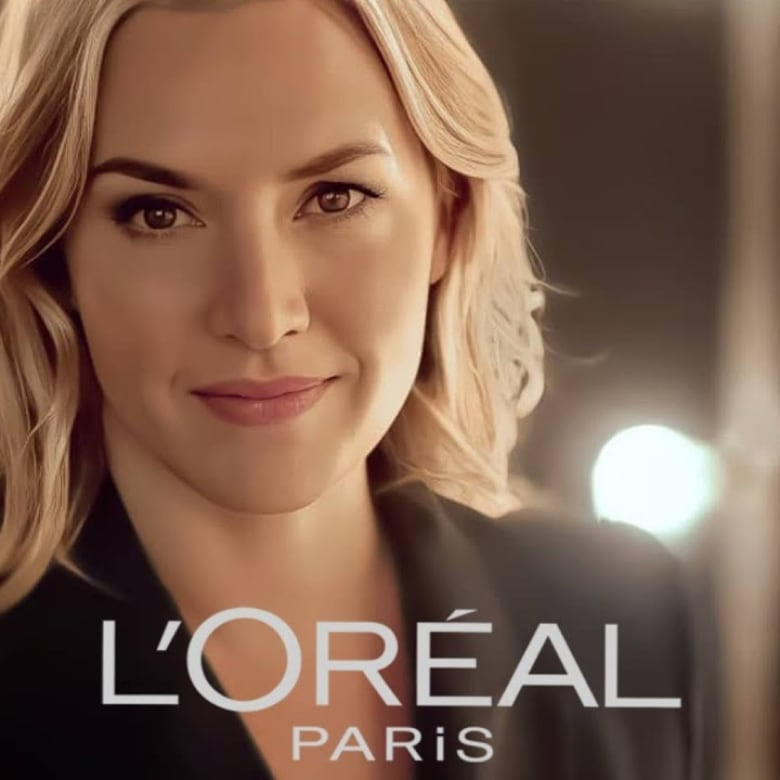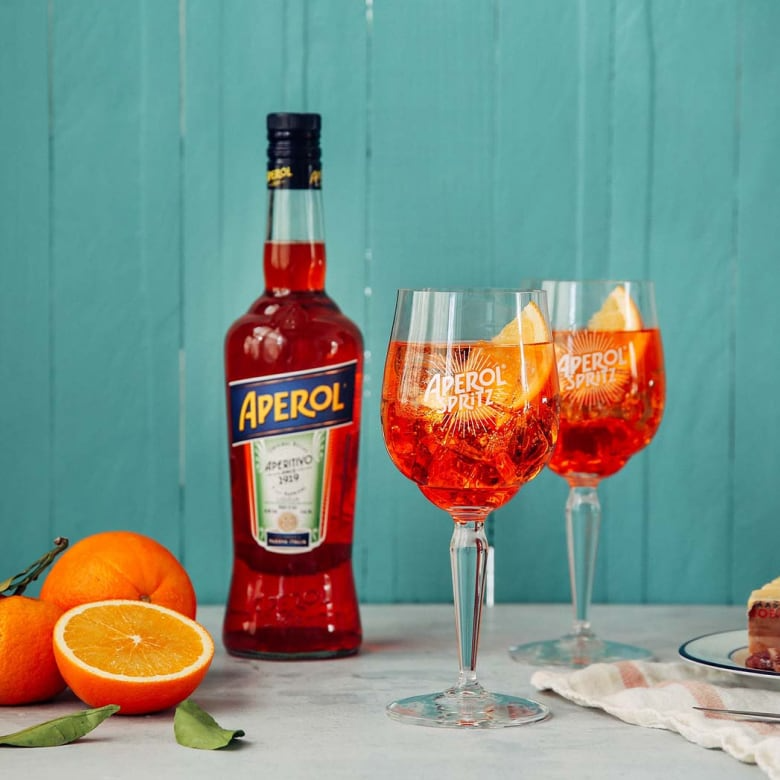00:00 / 15:08
Episode Transcript
- MichaelAaron: Welcome back to Behavioral Science for Brands, Richard and MichaelAaron's podcast where we get nerdy on all things behavioral science. Today we're doing How L'Oréal emphasizes their cost to signal quality. We're gonna dive deep into L'Oreal, one of the most iconic beauty brands in the last century, and really dissect how the way that they talk about themselves and the way they do their advertising has been a big piece of their success.
- MichaelAaron: Let's get into it.
- MichaelAaron: So Richard, let me ask you, how long do you think that L'Oreal has had their famous tagline? Because you're worth it.
- Richard: Well, I'm 46 and I can't remember them doing another line, so I reckon at least 30 years.
- MichaelAaron: 50 years, they've been using this tagline, a variation on this tagline, and it's connected with consumers so well.
- MichaelAaron: And when you see the talk about the campaign, they really call out that it's got three major elements. One, it emphasizes the price that you're gonna pay for a L'Oreal product, it's worth the price you're gonna pay. It's got this quality piece to it that I know you can talk a little bit about, and there's also an empowerment piece for their buyers.
- Richard: Yeah. So I think there are lots of different aspects to that line. The one that's most interesting from a behavioral science perspective is the emphasis on the cost. You know, they did not shy away from being expensive, and that does have some benefits. So probably the most interesting study for us comes from a Stamford psychologist, Baba Shiv and his study wasn't on beauty products, it was on wine.
- Richard: So he recruits a group of people and serves them five different bottles of wine, and each of the different bottles has a very prominent price label.
- MichaelAaron: This is a nice study. Yeah. Did five bottles of wine go.
- Richard: There's a lot of wine, but I think, you know, the psychologists aren't stupid, so the participants think they're drinking five different wines, but the twist in the experiment is that Baba Shiv actually repeats one of the wines.
- Richard: So to begin with, people drink the wine, they think it's a $5. A couple of minutes later, they're drinking it again at a different bottle, and they think it costs $45. When Shiv asked them to rate the wines, he sees a very, very clear pattern that supposedly expensive wine is rated 70% higher than the supposedly cheap wine, even though it's exactly the same liquid, completely different reviews.
- Richard: Now, what Shiv argues is, Our expectations of a product actually affect the experience of the product. If we think something's gonna be amazing, it tends to be amazing. If we think things to be awful, it tends to be awful. And what he argues is price is one of, not the only, but one of the levers that sets our expectations.
- Richard: Now, it's not just found in wines. Dan Ariely found a very similar thing with painkillers. If you think of painkillers expensive, it will have a better reduction of. So again and again, we see this behavior. Now, what's interesting for marketers is firstly, like L'Oreal, you might wanna emphasize your price. That is a very good way of persuading people.
- Richard: You're actually high quality. Well, the second topical thing is be careful about excessive discounting. If you go. And try and deal with these troubled economic times. By reducing your price, you will train people to think your product isn't that good, and that will become a self-esteem prophecy.
- MichaelAaron: Not that the Simpsons and Homer Simpson himself wasn't a great insight into all human behavior, but he famously said, Homer Simpson, I'll take your second cheapest bottle of wine.
- MichaelAaron: That's an amazing human insight. It's the inverse of what you're saying, where it's at the other end of the spectrum. At least it's not the cheapest. So it won't be the worst. Yeah, and there's a, there's a real connection I think everybody can make to that experience that well, if it's priced that way, it must be that good
- Richard: because, you know, consumers aren't stupid generally.
- Richard: It's true. You know, often in life we get what we pay for, but what's interesting is that that general facts become slightly disassociated with reality so that it becomes so wedded to people's minds that a high price begins to symbolize high quality regardless of the the makeup of the brand.
- MichaelAaron: Another example. Dr. Scholl's was famously launched in the eighties. These are shoe insects. Yeah, yeah, yeah, yeah. And they launch in supermarkets with these big NCAP displays, and the price of the insoles are 1995, and nobody buys them and they can't figure out why. These super fancy technology, it helps balance your foot, makes it more comfortable, won't.
- MichaelAaron: They relaunched the product at 39.95 and they can't keep 'em on the shelves. Again, this idea that the product must not be that effective at a lower price. Yeah, yeah. And so for a higher price, it must work better. Yeah. Same product.
- Richard: I think the, I mean, consumers might not go through the. Cap these kind of calculations in a very formal thought through way.
- Richard: But I think the basic principle they're thinking is, if it's as good as they claim, why would a brand who wants to maximize their profits be selling it so cheaply? It raises alarm bes. It's suspicious.
- MichaelAaron: Yeah. So let's take a quick break, hear from our sponsors, and when we come back, let's hear how this idea is being used even in campaigns today.
- MichaelAaron: Behavioral science for brands is brought to you today by function growth. Function. Growth is a team of brand side marketers who snap in to help brand teams grow their business Function Growth leverages a shared risk and reward model that puts skin in the game. That means they only make money when your brand grows.
- MichaelAaron: They leverage behavioral science as a key ways to drive brand growth with deep disciplines in many different areas. Reach out to them if you'd like to be leveraging behavioral science in your marketing or advertising. So in the first half of the podcast, we've been talking a lot about how L'Oreal has used this iconic tagline because you're worth it to really make their advertising really engaging.
- MichaelAaron: But what, how else is L'Oreal more recently used this concept in more innovative ways?
- Richard: Yes. Behavioral science isn't just something that happened in the 1970s on these grand projects. It's still in use today, and it can be used much, much more, one of my favorite applications, paper sites by L'Oreal is a really simple thing they do on the site, which is their virtual try-on facility.
- Richard: So I can upload my photo and then see what I would look like with hair dye or their makeups. Now, that's a really clever way of removing some of the uncertainty about purchasing, but it also taps into an idea called perceptual fluency. So for us, most relevant experiment comes from a psychological Ryan Elder.
- Richard: And he goes out, recruits a group of people and he shows them an image of a cake. And sometimes the cake has a fork on the left. Sometimes the cake has the fork on the right, when it's on its plate, shows this image to people and asks them how much they like it. And then he cuts the data by whether people are left or right.
- Richard: So what happens is he finds if the position of the fork matches your handedness, if that makes sense. Like, so I'm a right-handed person yet, yet I, if I see the fork on the right where I'd naturally put it, the uh, purchase intent for me would be 35% higher. So big old swing from a very small difference.
- Richard: Yeah. Now, when I first read this, I was a bit suspicious, you know, why would this happen? But he's got a very clear rationale. He says, it's all about making it easier for someone to imagine consuming their cake. If you imagine consuming it, you can imagine it tasting wonderful. You are more likely to desire it and making it fluid, make it easier to imagine.
- Richard: Boost that probability.
- MichaelAaron: And so the L'Oreal example is the same because it's saying, if I can imagine myself with the makeup before I buy it,
- Richard: And so the L'Oreal example is the same because it's saying, if I can imagine myself with the makeup before I buy it, I'm more likely to use it. And, and that principle is really easy, applicable in lots of different situations. So there's another study I love, it's not peer reviewed, so you always take them with a pinch of salt.
- Richard: But there's a great consultant called Michael Aagard who tests this idea and he does a split copy. Sometimes people see start your free trial, which is how brands normally do. But think about that. Your free trial is from the brand's perspective. He then tests that, again, start my free trial. Tiny little step, makes it a little bit easier for me to imagine doing it.
- Richard: He sees a significant boost in conversion, so the principle of perceptual fluency, getting someone to imagine using a product you can apply in all sorts of ice. The only limits the market is.
- MichaelAaron: You know, hearing that really makes me think of the concreteness of an idea versus how abstract it is. When you think about virtual try-ons, it's very concrete and you can see the benefit of it.
- MichaelAaron: You know, there's a famous example of when Apple first releases the iPod. Everybody in the market. Yeah. MP3 players. 256 megabytes of storage, 128 megabytes of storage. And when you look at the ads from the time, that's the top thing, the most important thing that they're sharing. Uh, but what's the value?
- MichaelAaron: How do you know what that means? iPod comes on the scene and they say A thousand songs in your pocket. and right away you can see in concrete terms the value of the proposition.
- Richard: Yes. Yeah. I, I love that because it shows you've got this, this idea, which is make it easier for people to, to imagine using your product.
- Richard: You can do that. Through a sophisticated piece of technology, like a virtual try-on, or you can do it through copywriting. You know, the idea can be expressed in so many different ways, and that's what's brilliant about behavioral science. Whatever category you work in, whatever challenge you've got, there is a way to apply these ideas.
- MichaelAaron: And you know, you and I have spent a lot of time talking about to make campaigns really effective. There's a literal application. Yeah, yeah. And there's a lateral application. So let's talk a little bit about that. So a literal application of something
- Richard: is the idea that you make a product more appealing.
- Richard: If you stress, it's popular. The literal application is you go out and say, we have a million customers, you know? It will have an effect. Lots of evidence backs up the lateral application if you create an aura of popularity. Now, the example I always love to use is the Apple earbuds. Now you think back to when Apple launched, they were not the market leader.
- Richard: They couldn't go out and say they were the number one, but luckily for them, their competitors allowed their success to be hidden away
- MichaelAaron: Literally in their pocket. Yeah. Yeah. Literally MP3 players in their pocket.
- Richard: No idea what the brand is. And the fact that every brand had the same interchangeable Instinctual headphones meant you didn't know if it was Motorola or Sony, whatever it was.
- Richard: You know, you compare that with Apple and because they had distinctive white earbuds, you didn't need to see the iPod to know people were listening to Apple. So what's so clever there is they make their success visible and that taps into social proof in a way that their competitors ignored. So yes, you do it literally, the real excitement, the real opportunities, these lateral applications.
- MichaelAaron: And for those that may be listening to this podcast and saying maybe. Or maybe they just had white earbuds. Yeah, black silhouette people. Yeah. And the only. Distinctive asset is those white earbuds.
- Richard: And it is a tactic that Apple have applied consistently. Now, when you get a message from an Apple phone, it says, sent from iPhone.
- Richard: iPhone. Now, brands never used to do that. So if it was a Sony being used Motorola, no one knew where it was being sent from. Apple have always consistently thought, how do we tell people? How do we make our popularity more noticeable, more salient? It's a consistent tactic they've used,
- MichaelAaron: sent from your iPhone was what they put in their mail app.
- MichaelAaron: How about when you text, when you text with iPhone to iPhone. Blue Bubble? Yes. Yeah, yeah. Know you're right. Text Blue iPhone to any other cell. Green bubble. Yeah. That lateral application of the color telling you the popularity of iPhones. Yeah.
- Richard: And the final one I, I've always liked about Apple is on the Mac.
- Richard: The bitten Apple logo, when the computers originally launched, faced the obvious way for the user, so it helped you open the laptop. What they did though, after a few years was spin it so it made sense to a viewer. It made it more obvious that you were using Apple. It made Apple easier to spot, easier to look popular.
- Richard: And that is probably the only time I can think of where Apple sacrificed. The user experience for boosting their perceived popularity. It's a consistent driver of their, their success
- MichaelAaron: without doubt. Yeah. So we are talking concreteness. Yeah, but we're also talking social proof. Yeah. Yeah. If you're interested, if our listeners are more interested in social proof, we did actually a whole podcast on this not long ago, so we'll drop in the notes, the link to the social proof podcast. But these are pretty closely linked.
- Richard: Yes, absolutely.
- MichaelAaron: So Richard, we always want to end these podcasts with the key things we want our marketers to take away. So what are the key power notes that we want our marketers to take away?
- Richard: Be careful on radically reducing your price. When the economic climate's tough, you will train people that you are
- Richard: poor quality, and that can be hard to shape. Make it easier for people to imagine using your products and you're tapping into this idea of perceptual fluency. And then finally, any of these studies, you don't have to force fit them onto your communications. Just take them as inspiration. These are hypotheses into human nature that you can use as a springboard for your creative thinking.
- MichaelAaron: When that kind of brings us to the end of our episode. What a journey today. We started 50 years ago with L'Oreal and because you're worth it, we zoomed forward to virtual try ons on their website, and then we kind of got a little lost talking about social proof. What's important for us that we want everybody to take away is.
- MichaelAaron: These are not just concepts, they're applications that can make your brand stronger. So until we're together next time, I'm MichaelAaron Flicker.
- Richard: I'm Richard Shotton.
- MichaelAaron: Remember,“You're Worth It.”
Episode Highlights
We are all in the business of
behavior change
Behavioral science is simply a catalog of
effective insights into what makes a powerful
change of behavior.
Good things come to those
who wait
Guinness takes a perceived flaw and puts it
front and center. While it sounds illogical,
there is significant behavioral science evidence
that proves this is a powerful tactic.
Being perfect doesn't always lead
to success
Northwestern University conducts a study that
shows how in the eyes of a consumer, a brand
that touts perfection can actually be seen as
not believable.
Resources & Useful Links
Want to dig deeper on the Pratfall
Effect? Here are additional
resources that
demonstrate how
some famous brands
have leveraged a flaw to
create
powerful brand communications.








